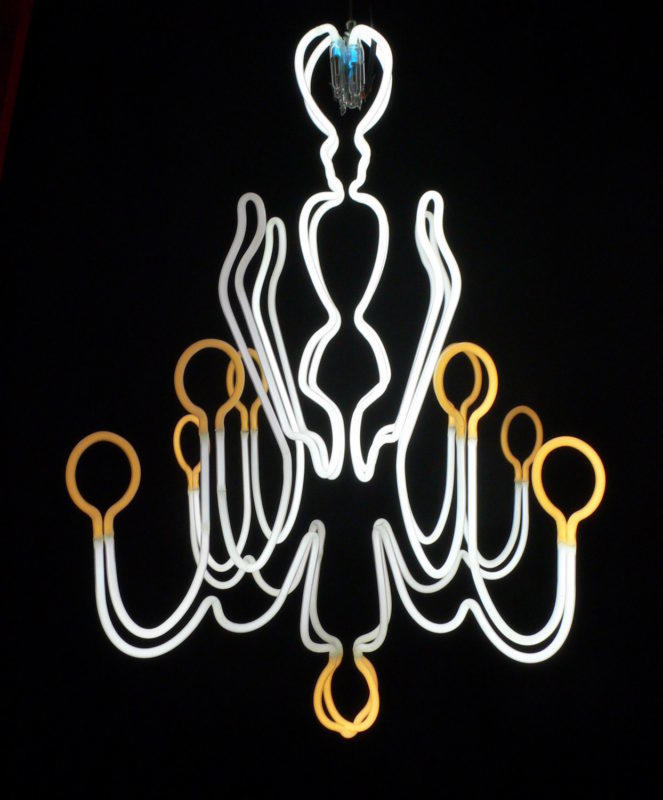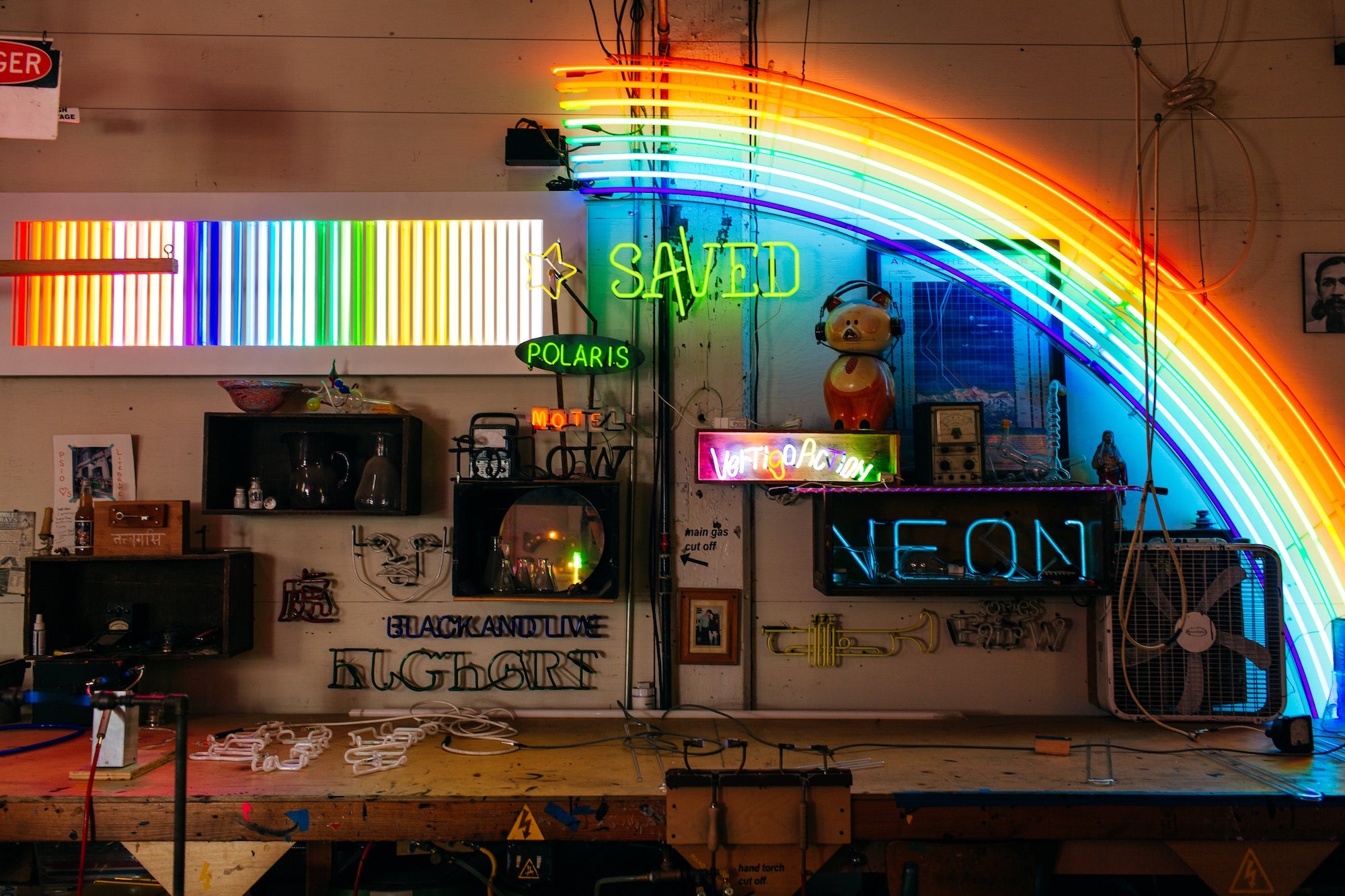“There’s a fire—grab the Evian!”
It was the early aughts, and Matt Dilling had just begun his Brooklyn-based lighting fabrication company, Lite Brite Neon. A commission saw him creating pieces for a Diane von Furstenberg fashion show, and someone had dropped a halogen lamp. The bulb cracked like an egg, causing a small fire, and French bottled water was the closest flame retardant.
No one was hurt, the show was a hit, and Dilling went on to build Lite Brite into something of a behind-the-scenes institution. Working in a medium often associated with the tacky, tawdry and commercial, he's known for bringing a thoughtful, poetic approach to neon. Dilling's company, now primarily based in Kingston, New York, has constructed custom pieces for clients ranging from Bergdorf Goodman to artist Glenn Ligon.

Lite Brite also designs neon for interior designers, often in a commercial context (notably for contract giant Gensler), but frequently for residential clients as well. Business of Home chatted with Dilling, who shed light on a medium that tends to inspire strong reactions. “No one’s neutral about neon,” he says. “They either hate it or love it.”
Neon is handmade. Every single neon sign you’ve ever seen, from a flickering “OPEN” in the window of a dive bar to an intricate piece in a museum, was made by hand. The process requires precision craftsmanship, and has remained relatively unchanged since its invention in the 1910s. Dilling relishes neon’s malleable, handmade quality—a frequent request from clients is to re-create the handwriting of a friend or loved one. Or, notably, an artist who researched Nikola Tesla’s handwriting to commission a neon sign that read “Fuck you Edison.” (Thomas Edison and Tesla famously feuded over various inventions in the early days of electrical standardization.)

Neon is illegal. Technically speaking, hardwiring neon signs into a residential application is against national electric codes. (They can be plugged into an outlet, according to regulation.) It’s done all the time, of course, but it isn’t strictly by the book.
Neon is divisive. “People bring a narrative to neon,” says Dilling. “They have feelings about it.” In recent decades, the medium has rapidly declined in everyday commercial use, but its popularity in art and high-end retail has boomed. Whatever the cultural context, neon brings a lot of baggage. A phrase written in neon, he says, never reads neutral: It’s either a full-throated celebration or an ironic joke. It’s a high-wire medium, not for the faint of heart.
Quoting artist Ed Ruscha’s formula for great art—it evokes the reaction “Huh?” and then “Wow!” versus the more sensationalistic “Wow!” followed by a bored “Huh”—Dilling laments the hokiness of much contemporary neon. “So much neon I see, the first response is ‘Wow.’ Then it’s ‘Huh.’”
Neon is loud. For sheer attention-grabbing power, it’s tough to beat a vibrant neon sign. “People are drawn to neon light, like bugs are drawn to a bug zapper,” says Dilling. But neon not only commands attention, it can transform everything else in a room instantly, for better or worse. “You’re taking a medium that was designed to literally stop traffic and putting that in someone’s home, [so] there needs to be an appreciation of the scale you’re working in,” he says. “Are you really thinking about this over an extended period of time, beyond the day you get it, photograph it, and put it on Instagram? It can be a livable medium, but if you’re doing something that’s just ‘wow,’ pretty soon the ‘huh’ will settle in.”

Neon is subtle. Clients often wrongly assume that a neon work’s palette is strictly limited. Not so. Tweaking the three variables that determine its color (the gas, the glass tubing, and the phosphor tube coating) can lead to extremely specific shades and vibrancies. White, says Dilling, is a particularly malleable color for neon. “There’s a huge range of differences in white neon, ranging from very warm to very cool in temperature. In the context of someone’s home, you can bend white to be very livable.”
Neon is personal. Neon tends to enchant the young and evoke powerful nostalgia in the not-so-young. Some of Dilling’s most notable residential commissions have replicated neon signs from a client’s past. For one, he re-created the “WO” from a Woolworth’s sign that was visible from the client’s childhood home. For a married couple, he made a small-scale replica of a sign that adorned the motel where they were married. When the couple later divorced, says Dilling, the sign ended up on the doorstep of his studio. Sometimes neon is a little too personal.
Homepage photo: Courtesy of Lite Brite Neon




























